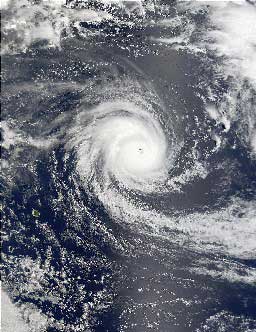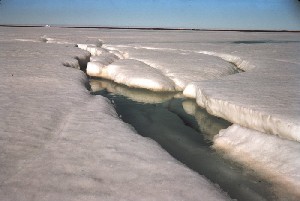|
|
 |
|
|
|
 |
| |
|
|
 |
How are
people changing
the climate?
Read more |
2. What will
a warmer world be like?
Changes in different
parts of the world
What are the impacts of climate change over the next hundred years expected to look like in different parts of the world? Read here what the IPCC has to say. |
|
|
|
|
 |
1. Click the map to read about possible consequences of climate changes in different parts of the world. Figure: CICERO |
Africa
A weak economy makes adaptation to climate change difficult. Vulnerability is high, mainly because people depend so heavily on agriculture without the benefit of irrigation.
|
 |
 |
|
2. EVEN DRIER: Global warming could make deserts spread in parts of Africa. Photo: NOAA Photo Library
|
|
 |
- More frequent drought, flooding and other extreme events will have a negative effect on access to food and water, health, and infrastructure, and will slow down development in Africa.
- Sea-level rise will result in more frequent flooding and more coastal erosion. Several countries in Africa are especially vulnerable to this.
- Grain yield is expected to drop, which can lead to food shortages, especially in countries with little food import. The rivers in the northern and southern countries in Africa will have reduced flows of water.
- Insects that carry diseases will expand their habitats, which will lead to an increase in diseases transmitted in this fashion (malaria, for example).
- Desertification (land turning into desert) will occur more quickly because of reduced rainfall, especially in Southern, North, and West Africa.
- Many plant and animal species will become extinct, which in turn will have a negative effect on agriculture and tourism.
|
Asia
There is a large gap between Asian countries when it comes to vulnerability to climate change: The poor countries are very vulnerable and will have a difficult time adapting, while the rich countries are not very vulnerable and will easily adapt.
|
 |
 |
|
3. TROPICAL CYCLONE: Dina northeast of Mauritius and Reunion Islands in the Indian Ocean. This image was captured on January 20, 2002. Photo: NASA
|
|
 |
- Extreme events such as flood, drought, forest fires, and tropical cyclones may increase in the warmest parts of Asia.
- Sea-level rise and increased intensity of tropical cyclones may render the homelands of tens of millions of people living in the coastal areas in temperate and tropical Asia uninhabitable. Sea-level rise will also threaten coastal eco-systems, especially mangrove trees and coral reefs.
- Production in agriculture and fishing in tropical areas will be reduced, while agriculture in northern areas will be increased.
- There will be less access to water in several places in the south, while there will be improved access in many places in the north.
- There will be a greater spread of disease because of the increase in disease-carrying insects and more extreme heat.
- Energy demand will increase.
- Some regions will experience a great loss in tourism.
- Faster extinction of animal and plant species will become more likely.
|
Australia and New Zealand
In general, Australia and New Zealand have a high adaptive capacity and are thus not very vulnerable. The exception is the aboriginal population.
|
 |
 |
|
4. FOREST AT FIRE: Forest fires could become more frequent in areas that get hotter and drier. Photo: Corel Gallery
|
|
 |
- More frequent drought will make access to water a more important issue and increase the likelihood of forest fires.
- Some species that are specially adapted to particular climates, and have difficulty relocating to new habitats because they are adapted to conditions related to topography and landscape, will become threatened and face extinction. This includes the coral reefs.
- The initial impacts of climate change are expected to have positive effects on agriculture, but if the trend continues, the negative effects will eventually outweigh the positive effects for certain types of agriculture and in certain areas.
- Increased frequency and intensity of tropical cyclones will result in increased risk of damage to human life, property, and ecosystems through more flooding, storm surges, and wind.
|
Europe
Europe generally has a relatively high capacity to adapt. Southern Europe and areas around the Arctic region are somewhat more vulnerable than other parts of Europe.
|
|
|
 |
- There will be more precipitation in the north, and less in the south. Southern regions will thus become more vulnerable to drought.
- Biological zones – tree lines, for example – will move northward and upward. Some species will lose their niches and could thus face extinction.
- The danger of rivers flooding will increase in larger areas of Europe.
- Coastal regions will be more vulnerable to flood and erosion, which will damage coastal settlements and agriculture.
- Glaciers in alpine landscapes will be significantly reduced.
- Permafrost (ground that is frozen year-round) will disappear in many places.
- With respect to agriculture, there will mainly be positive impacts in the north, while production in Southern and Eastern Europe will decrease somewhat.
- Traditional tourist areas will be affected by temperature increases – both summer destinations (more heat waves) and winter destinations (lack of snow).
|
Latin America
Latin America is vulnerable to climate change, and has a low adaptive capacity, especially when it comes to extreme events.
|
|
|
 |
- Glaciers will shrink or disappear, which will have a very negative impact on the access to freshwater in areas where they provide an important source of freshwater.
- Both flood and drought will occur more frequently. The floods will impair water quality in certain areas.
- The intensity of the tropical storms is expected to increase, which implies increased risk of loss of life, damage to property, and disturbances in ecosystems.
- Agriculture is expected to have a lower yield, which will threaten the economic basis of some regions.
- The geographical spread of disease-carrying insects will expand toward the poles and up in the mountains, and more people will be exposed to diseases like malaria, dengue fever, and cholera.
|
North America
Relatively high adaptive capacity and thus little vulnerability in general, with the exception of certain native peoples.
|
 |
 |
|
5. MANGROVE: Ecosystems in mangrove swamps are vulnerable to sea-level rise. Photo: The NOAA Photo Library (click to enlarge, 114 kB)
|
|
 |
- Biodiversity loss will be increased.
- Sea-level rise will result in increased coastal erosion, loss of wetland areas, and more frequent storm surges, especially in Florida and along the Atlantic coast of the United States.
- Weather damage is expected to increase, which will result in higher insurance premiums for such conditions.
- Residential areas, business and industry, infrastructure, and ecosystems (especially those associated with mangrove trees) located in coastal areas will be negatively affected by sea-level rise.
- Agriculture will largely benefit, but the consequences will vary between regions and type of agriculture.
- Some unique ecosystems, including prairies, wetlands, alpine tundra, and cold water systems will be challenged.
- Diseases that can be transmitted by insects (including malaria, dengue fever and elephantiasis) will expand their scope in North America.
- Illness and death associated with air quality and heat spells are expected to increase.
|
The Polar Regions
The natural environment in the polar regions is highly vulnerable to climate change. Also certain native peoples are vulnerable and have little capacity and few possibilities to adapt to the changes.
|
 |
 |
|
6. MELTING ARCTIC: Early spring melt - a stream is seen flowing on the ice. Photo: The NOAA Photo Library (click to enlarge, 62 kB)
|
|
 |
- Climate change in the polar regions is among the most dramatic and will occur the fastest.
- Changes have already been registered – including reduced ice thickness in the Arctic, thawing of permafrost (ground that is frozen year round), coastal erosion, change in the ice cover, and change in the distribution and existence of species.
- The ice in the Arctic will melt faster than other ice because it lies in water. The Arctic ice can disappear entirely in a very short time, and it is not unlikely that the North Pole will be free of ice during the summer as early as by the end of this century. This will have a very negative impact on biodiversity. One benefit is that the sea route from Europe to Japan will be shorter.
|
Island states
Island states are very vulnerable and have little adaptive capacity.
|
 |
 |
|
7. Flooding of low-lying areas by extreme high tides. If sea level continues its rise, such events will become increasingly common. Photo: The NOAA Photo Library (click to enlarge, 85 kB)
|
|
 |
- Sea-level rise will cause severe damage including increased coastal erosion with loss of land and property, increased storm surges, and salinization (infiltration of salt water) of the freshwater. Adapting to such changes will require substantial resources.
- Weakening of the coastal ecosystems will threaten the fishing industry and have a negative impact on food security and the economy.
- Agriculture will suffer from a reduction in arable land and salinization of the soil.
- Tourism, which is an important industry for many island states, is also expected to be sharply reduced after climate changes become evident.
|
|
Author: Camilla Schreiner - CICERO (Center for International Climate and Environmental Research - Oslo) - Norway. Scientific reviewers: Andreas Tjernshaugen - CICERO (Center for International Climate and Environmental Research - Oslo) - Norway - 2004-01-20 and Knut Alfsen - Statistics Norway - Norway - 2003-09-12. Educational reviewer: Nina Arnesen - Marienlyst school in Oslo - Norway - 2004-03-10. Last update: 2004-03-27.
|
|
 |
|









